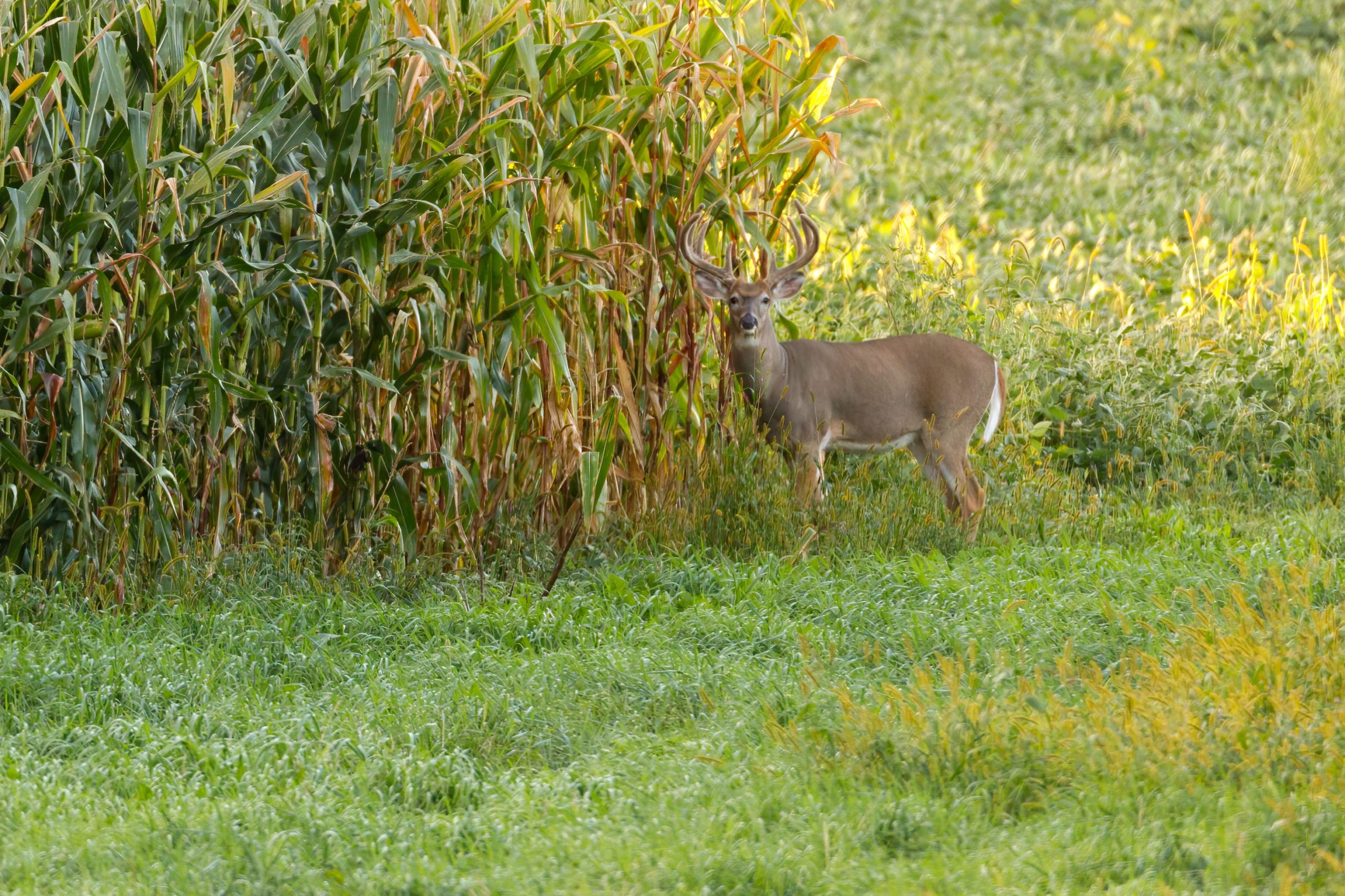Updated March 2023
The first few days of archery season in any state can be filled with high amounts of deer sightings and maybe you even had the opportunity to harvest a nice buck or doe. Then all of a sudden, it may seem like mature bucks aren’t anywhere to be found. This article will discuss what the October lull is, why it happens, and strategies for locating mature bucks during this phase of the season.
What is the October Lull?
The October lull is often described as the period of time in early to mid-October when whitetails become more nocturnal and increasingly weary, leading to less deer sightings. Many bowhunters blame this on the sudden influx of other hunters in the woods resulting in an abrupt increase in hunting pressure. As more hunters enter the woods in early October, deer notice and begin taking different routes in less pressured areas.
In reality, deer are not necessarily becoming more nocturnal, but rather changing their normal patters. In early to mid-October, whitetails are starting to change from their predictable summer patterns to less predictable behavior. In many states, this is also about the same time that leaves begin dropping. The combination of hunting pressure and the sudden openness of the woods drives many mature bucks toward a more nocturnal lifestyle. Additionally, whitetails aren’t as active during warmer weather which tends to be present during the early part of October compared to later in the season.
Even well-established professionals in the whitetail hunting industry agree that the October lull exists. As John Eberhart says in his book Precision Bowhunting, “Those dreaded middle weeks of October are here. The deer activity in general has dropped off from the early season, and the bucks, especially the mature ones, have all but vanished. The rut in not yet in gear, and there is little action in the woods.” Even Steve Barylla says in his book, Bowhunting Tactics that Deliver Trophies, “the October lull begins when buck sightings dry up on food sources and continues until right around October 25.” By understanding what deer are doing, you will be able to successfully adapt to the situation.
So what does this mean for hunters? Should you just sit out this time of season? Fortunately there are a number of strategies that can help you find big bucks during the October lull.
Related: Hunting Whitetail Deer in the Rain
Strategies for Finding Deer During the October Lull
- Manage Hunting Pressure – As referenced earlier, hunting pressure may be the #1 contributor to the October lull. This is because intense hunting pressure intensifies the situation. During the lull, it’s best to avoid overhunting certain stands and areas. If you hunt an area large enough, rotate stand locations so deer do not catch on to your presence. Any time you spook a deer or leave traces of scent behind, you lower your chances of encountering a mature buck during an already challenging phase of the season.
- Be Mobile – Many hunters may be wondering if the October lull is the time to be aggressive, or play it safe. If you have intel that deer are moving in a certain location, such as by use of trail cameras, then hunt there. Having a mobile treestand or ground blind ready makes it easy to quickly adapt to what the deer are doing.
- Weather Patterns – Historically, air temperatures slowly decrease throughout the month of October. Keep an eye on the forecast for any unusual cold fronts or drastic temperature drops. Cold fronts where the temperature drops 12-15 degrees in a day are great for increased deer activity.
- Find Bedding – Since the pre-rut has not begun yet, mature bucks will most likely only be traveling to and from bedding and food sources. Get as close to bedding as possible to catch mature bucks moving to a food source during daylight. Look for those heavily used trails near bedding and position yourself as close as possible. During this time of year, it is very likely there will be standing corn nearby. Hunt the edges or transition areas near these fields to catch a mature buck looking to satisfy his hunger.
- Terrain Features – As the lush green of summer wears off and the barren woods of fall set in, deer naturally feel less protected by the lack of cover. During this time, key in on thick cover located in or near pinch points and funnels. Deer still need to move and will do so only if they feel protected.
As you have read, the October lull in indeed a real phenomenon, with a variety of factors that can influence deer behavior during this phase of the season. Success during this time of the year comes down to being able to adapt accordingly to deer behavior and new patterns. Now that you understand the October lull and how to hunt it properly, you should now be able to find that mature buck early in the season. For related articles, check out other posts from Bowhunting Depot!

